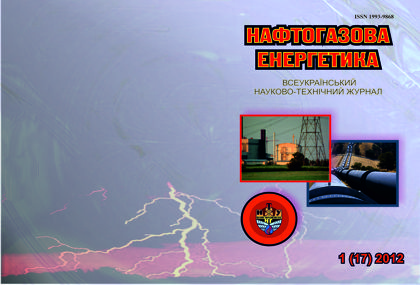CREATION OF LOCAL SOURCES OF ELECTRIC POWER BASED ON FUEL CELLS
Keywords:
fuel, hydrogen energy, electrolyte, renewable sources of energyAbstract
After analysis of traditional energy resources and their use for power generation as a whole, the conclusion has been made about the necessity to consider methods of increasing energy saving, introduction of new technologies that would ensure greater energy efficiency and reliability. As one of these methods the method of “fuel cells” is taken into consideration. The article describes in detail the principle of hydrogen fuel cells as a basis of the combined sources electricity. It also examines the advancements in the creation of two stages of fuel cells: 1) the description of the main types of fuel cells, their characteristics and scope, 2) the presentation of methods to improve the efficiency of fuel cell parameters, reducing production cost and increase of service life. These advantages and disadvantages of using fuels cells are also pinpointed.
The purpose of this study is to analyze the combined sources of electricity, the main elements of which are wind turbine, “electrolyzer – fuel storage – fuel cell” photocell system, where the last in the period of surplus in production of electricity accumulates it in the form of chemical energy of hydrogen. The efficiency of such energy sources is considered on the basis of approximate daily schedule of energy in some low-power consumer, as well as for electricity wind generator and solar cells. The analysis focuses on the full economy of such power, that is “electrolyzer– fuel storage – fuel cell” photocell system is a buffer between the consumer and the primary energy source and requires no additional input of fuel. In addition to consideration of energy efficiency and reliability of such installations, an estimation of its environmental performance, namely calculated mass of harmful substances that would be allocated, if the considered consumer used traditional sources of energy – thermal power plant. On the basis of the analysis the conclusions has been made about the feasibility of using fuel cells in combined electrical systems.
Downloads
References
2 Васильев В.П. Аналитическая химия. Учеб. для студентов вузов, обучающихся по химико-технол. специальности. / Васильев В.П.
– Москва: Дрофа, 2002. – С.179 – 181.
3 Керамічні паливні комірки для космічних апаратів / [М.I.Луговий, В.М.Слюняєв, Є.М.Бродніковський, М.Бричевський, М.П.Бродніковський, О.Д.Васильєв, Р.Штейнбергер-Вількенс]. – Київ: Космічна наука і технологія, 2009. – Т. 15. № 2. – С. 5–15.
4 O. Vasilyev. Historic. Aspects of Fuel Cell Development in Ukraine. / O. Vasilyev. – Kiev: NATO ARV Fuel Cell Technologies: State and
Perspectives, 2004. – P. 19–89.
5 Васильєв О.Д. Від піску–циркону до електрики: український шлях / Васильєв О.Д., Верещак В.Г., Смирнова А.Л. – Чернівці: Науковий вісник Чернівецького університету, 2008. – С.169–191.
6 Баклан В.Ю. Технология изготовления керамического твердого электролита на основе стабилизированного диоксида циркония для высокотемпературных топливных элементов / Баклан В.Ю. Васильєв А.Д., Хитрич В.Ф. – Екатеринбург: Тезисы доклада XIV Российской конференции по физической химии и электрохимии расплавленных и твердых электролитов, 2007. – С. 13-14.
7 Пальчик О.А. Моделювання автономного джерела живлення на базі паливних елементів / Пальчик О.А. – Київ: науковий журнал національного університету біоресурсів і природокористування України, 2011. – С. 5–6.


.png)






1.png)









